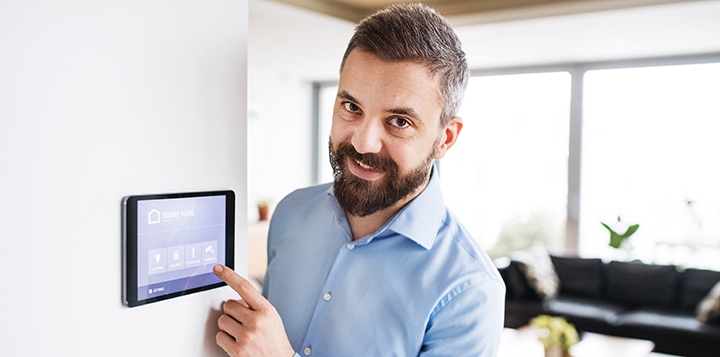Doc Brown and Marty McFly brought us glimpses of the smart home and imaginative technology in the classic film Back to the Future II. While it seemed so futuristic at the time, we now have technology available that makes our homes smarter than anything they could dream up in the 1980s. Plus we also have bionic implants (that don’t short circuit), hoverboards, and virtual reality video games we can play without using your hands. Great Scott!

The smart home of our future will improve our lives in a variety of ways. When we’re rushing around to get to work, we won’t worry about forgetting to adjust the thermostat. Smart thermostats that use artificial intelligence will adjust the temperature based on our location and activity. While we’re away, we can keep an eye on our pet with video monitors. We can be confident our package will be delivered safe and sound thanks to our smart garage door.
Smart devices will allow parents of the smallest members of the household – children and pets – to maintain peace of mind through advanced monitors, cameras, and pet care. We will be able to plan for smart toilets and mirrors, motion-activated lights, and voice-activated shower controls in our next bathroom remodel.
Our kitchens will be the brain of the smart home with a touch-screen hub that will let us search the internet, create shopping lists, and find recipes. It will also let us conduct a live video chat, watch dishes as we cook, and control other connected devices in the home like our thermostat, lights, and door lock.
Future homes will help our families breathe easier through smart purifiers, control the lights with our voice, safety sensors that monitor our guns, grills, and stoves and smart water valves.

The next generation of the smart home will utilize artificial intelligence, voice recognition, and more sophisticated and seamless integration of devices. Home technology should ultimately improve the lives of the people that live there. To truly be smart, a device should:
How will smart homes support this technology? Homes will need more internet bandwidth to support multiple devices, streaming, and safety features. For families that also have a home office, reliable and fast internet will become an indispensable feature.